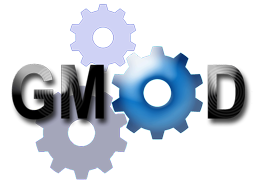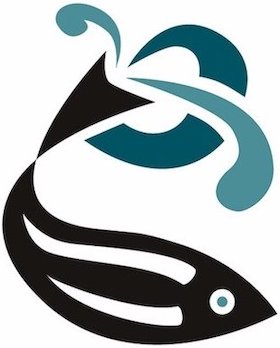
In genetics, the phenotype is the set of observable characteristics or traits of an organism. The term covers the organism's morphology, its developmental processes, its biochemical and physiological properties, its behavior, and the products of behavior. An organism's phenotype results from two basic factors: the expression of an organism's genetic code and the influence of environmental factors. Both factors may interact, further affecting the phenotype. When two or more clearly different phenotypes exist in the same population of a species, the species is called polymorphic. A well-documented example of polymorphism is Labrador Retriever coloring; while the coat color depends on many genes, it is clearly seen in the environment as yellow, black, and brown. Richard Dawkins in 1978 and then again in his 1982 book The Extended Phenotype suggested that one can regard bird nests and other built structures such as caddisfly larva cases and beaver dams as "extended phenotypes".

The genotype–phenotype distinction is drawn in genetics. "Genotype" is an organism's full hereditary information. "Phenotype" is an organism's actual observed properties, such as morphology, development, or behavior, and the consequences thereof. This distinction is fundamental in the study of inheritance of traits and their evolution.
The Gene Ontology (GO) is a major bioinformatics initiative to unify the representation of gene and gene product attributes across all species. More specifically, the project aims to: 1) maintain and develop its controlled vocabulary of gene and gene product attributes; 2) annotate genes and gene products, and assimilate and disseminate annotation data; and 3) provide tools for easy access to all aspects of the data provided by the project, and to enable functional interpretation of experimental data using the GO, for example via enrichment analysis. GO is part of a larger classification effort, the Open Biomedical Ontologies, being one of the Initial Candidate Members of the OBO Foundry.
The Rat Genome Database (RGD) is a database of rat genomics, genetics, physiology and functional data, as well as data for comparative genomics between rat, human and mouse. RGD is responsible for attaching biological information to the rat genome via structured vocabulary, or ontology, annotations assigned to genes and quantitative trait loci (QTL), and for consolidating rat strain data and making it available to the research community. They are also developing a suite of tools for mining and analyzing genomic, physiologic and functional data for the rat, and comparative data for rat, mouse, human, and five other species.
The Open Biological and Biomedical Ontologies (OBO) Foundry is a group of people dedicated to build and maintain ontologies related to the life sciences. The OBO Foundry establishes a set of principles for ontology development for creating a suite of interoperable reference ontologies in the biomedical domain. Currently, there are more than a hundred ontologies that follow the OBO Foundry principles.

The Generic Model Organism Database (GMOD) project provides biological research communities with a toolkit of open-source software components for visualizing, annotating, managing, and storing biological data. The GMOD project is funded by the United States National Institutes of Health, National Science Foundation and the USDA Agricultural Research Service.

The Zebrafish Information Network is an online biological database of information about the zebrafish. The zebrafish is a widely used model organism for genetic, genomic, and developmental studies, and ZFIN provides an integrated interface for querying and displaying the large volume of data generated by this research. To facilitate use of the zebrafish as a model of human biology, ZFIN links these data to corresponding information about other model organisms and to human disease databases. Abundant links to external sequence databases and to genome browsers are included. Gene product, gene expression, and phenotype data are annotated with terms from biomedical ontologies. ZFIN is based at the University of Oregon in the United States, with funding provided by the National Institutes of Health (NIH).

Ataxin-3 is a protein that in humans is encoded by the ATXN3 gene.

Transcription regulator protein BACH2 is a protein that in humans is encoded by the BACH2 gene. It contains a BTB/POZ domain at its N-terminus which forms a disulphide-linked dimer and a bZip_Maf domain at the C-terminus.
SUPERFAMILY is a database and search platform of structural and functional annotation for all proteins and genomes. It classifies amino acid sequences into known structural domains, especially into SCOP superfamilies. Domains are functional, structural, and evolutionary units that form proteins. Domains of common Ancestry are grouped into superfamilies. The domains and domain superfamilies are defined and described in SCOP. Superfamilies are groups of proteins which have structural evidence to support a common evolutionary ancestor but may not have detectable sequence homology.
Europhenome is a resource for presenting, searching and analysing mouse phenotypes that were revealed by high throughput mouse phenotyping programmes such as EUMODIC.
Suzanna (Suzi) E. Lewis was a scientist and Principal investigator at the Berkeley Bioinformatics Open-source Project based at Lawrence Berkeley National Laboratory until her retirement in 2019. Lewis led the development of open standards and software for genome annotation and ontologies.

The International Mouse Phenotyping Consortium (IMPC) is an international scientific endeavour to create and characterize the phenotype of 20,000 knockout mouse strains. Launched in September 2011, the consortium consists of over 15 research institutes across four continents with funding provided by the NIH, European national governments and the partner institutions.
The Human Phenotype Ontology (HPO) is a formal ontology of human phenotypes. Developed as part of the Monarch Initiative in collaboration with members of the Open Biomedical Ontologies Foundry, HPO currently contains over 13,000 terms and over 156,000 annotations to hereditary diseases. Data from Online Mendelian Inheritance in Man and medical literature were used to generate the terms currently in the HPO. The ontology contains over 50,000 annotations between phenotypes and hereditary disease.
The Monarch Initiative is a large scale bioinformatics web resource focused on leveraging existing biomedical knowledge to connect genotypes with phenotypes in an effort to aid research that combats genetic diseases. Monarch does this by integrating multi-species genotype, phenotype, genetic variant and disease knowledge from various existing biomedical data resources into a centralized and structured database. While this integration process has been traditionally done manually by basic researchers and clinicians on a case-by-case basis, The Monarch Initiative provides an aggregated and structured collection of data and tools that make biomedical knowledge exploration more efficient and effective.
PathoPhenoDB is a biological database. The database connects pathogens to their phenotypes using multiple databases such as NCBI, Human Disease Ontology Human Phenotype Ontology, Mammalian Phenotype Ontology, PubChem, SIDER and CARD. Pathogen-disease associations were gathered mainly through the CDC and the List of Infectious Diseases page on Wikipedia. The manner by which they assigned taxonomy was semi-automatic. When mapped against NCBI Taxonomy, if the pathogen was not an exact match, it was then mapped to the parent class. PathoPhenoDB employs NPMI in order to filter pairs based on their co-occurrence statistics.
Phenoscape is a project to develop a database of phenotype data for species across the Ostariophysi, a large group of teleost fish. The data is captured using annotations that combine terms from an anatomy ontology, an accompanying taxonomic ontology, and quality terms from the PATO ontology of phenotype qualities. Several other OBO ontologies are also used. The anatomy ontology was developed from the zebrafish anatomy ontology developed by the Zebrafish Information Network.

Melissa Anne Haendel is an American bioinformaticist who is the Chief Research Informatics Officer of the Anschutz Medical Campus of the University of Colorado as well as a Professor of Biochemistry and Molecular Genetics and the Marsico Chair in Data Science. She serves as Director of the Center for Data to Health (CD2H). Her research makes use of data to improve the discovery and diagnosis of diseases. During the COVID-19 pandemic, Haendel joined with the National Institutes of Health to launch the National COVID Cohort Collaborative (N3C), which looks to identify the risk factors that can predict severity of disease outcome and help to identify treatments.
Judith Anne Blake is a computational biologist at the Jackson Laboratory and Professor of Mammalian Genetics.







